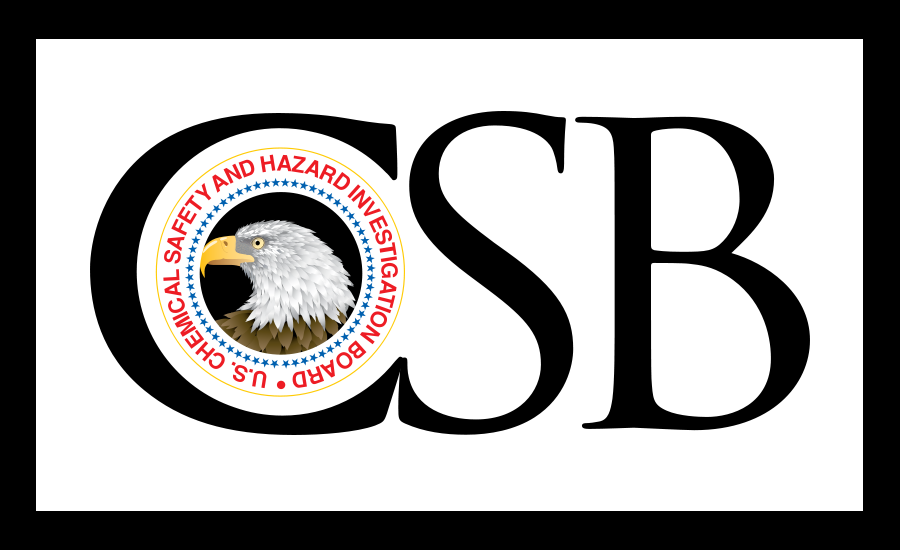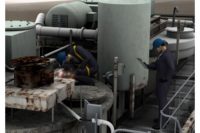No safety management system at company that had fatal tank explosion
Decommissioning process made equipment "a bomb"

There is no way now to know exactly what chemicals were present in two pieces of equipment that were being decommissioned at the Midland Resource Recovery (MRR) Facility in Phillippi, West Virginia on May 24, 2017. What is known, according to the U.S. Chemical Safety Board, is that dangerous chemical reactions occurred, leading to violent explosions that left workers dead and another seriously injured.
The CSB’s investigation into that incident and another which followed shortly stemmed from MMR’s lack of a comprehensive safety management system to identify and control hazards from reactive chemicals.
Worker investigating first incident killed in the second
The CSB’s final investigation report on explosion of two pressure vessel explosions that occurred at the MRR facility notes that two workers were fatally injured, and another was severely injured during the first incident, which occurred on May 24, 2017. While the CSB was investigating that explosion, the MRR facility experienced a second explosion on June 20, 2017. The second explosion fatally injured a contractor employed to perform investigation and mitigation work at the facility following the original incident.
About the decommissioning process
MRR provides many services related to natural gas odorants known as mercaptans, which are chemicals used to give natural gas a distinct unpleasant odor so the odorless gas can be detected by humans. One of the related services that MRR provides is to decommission and remove obsolete odorizer equipment from sites in the US and Canada, and transport this equipment to its Philippi, West Virginia, or Midland, Texas, site for chemical treatment to remove the mercaptan odor from the steel before it is scrapped.
The chemical treatment to remove the odor involves filling the odorizing equipment with diluted sodium hypochlorite, or bleach, and sealing it shut for a period of time during which a liquid is formed that MRR referred to as “process water.” On May 24, 2017, two workers and the company owner attempted to unseal and drain the process water from one of the decommissioned odorizers when a violent explosion occurred, fatally injuring one of the workers and the company owner, and severely injuring the second worker. Later, on June 20, 2017, a contract worker, who was hired to investigate and drain the remaining odorizers on site, was fatally injured when a second odorizer exploded shortly after it was unsealed.
Each odorizer was essentially a "bomb"
In its final report, the CSB says one possibility for the blast is that the equipment contained methanol, which can react with sodium hypochlorite to form highly explosive methyl hypochlorite. Given that the odorizers were filled with unknown liquid chemicals and sealed tight, along with the potential for dangerous reactive chemistry such as what occurs when sodium hypochlorite mixes with methanol, MRR’s equipment deodorizing process created the possibility that each treated odorizer was essentially a bomb.
No hazard ID process
The CSB investigation found that MRR lacked an effective safety management system to identify and control hazards from reactive chemicals. Among other things, MRR had no formal hazard identification process in place to analyze or characterize what chemicals were inside the odorizer vessels—and in what quantity—before decommissioning and chemically treating the equipment with sodium hypochlorite. The company also lacked effective safeguards to prevent unexpected or uncontrolled chemical reactions.
Lessons learned
In its report, the CSB provides the following key lessons for companies that deal with reactive chemistry:
- Companies need a robust safety management system in place to prevent reactive chemical incidents. If a process has the potential for uncontrolled chemical reactions to occur, the company should conduct a formal evaluation of the reactive chemistry, perform a hazard analysis, and ensure that sufficient safeguards are in place to prevent reactive chemical incidents.
- Companies should have a thorough and complete understanding of their reactive chemistry under design conditions and under all foreseeable abnormal conditions. For example, companies should avoid treating uncharacterized waste materials with sodium hypochlorite because of the potential explosive hazards associated with its complex chemistry.
No regulatory action on the hazard
Since 2002, the CSB has called on OSHA and the EPA to expand their standards to cover reactive chemicals and hazards, but to date neither agency has acted on the recommendations. Kulinowski said, “The CSB has long been concerned about the persisting gaps in federal safety regulations for reactive chemical hazards, and tragic incidents like the two explosions at MRR continue to occur. It is past time for OSHA and the EPA to adopt our recommendations to update their regulations to cover catastrophic reactive hazards that have the potential to seriously affect workers and the public.”
The CSB is an independent, non-regulatory federal agency whose mission is to drive chemical safety change through independent investigations to protect people and the environment. The agency’s board members are appointed by the president and confirmed by the Senate. CSB investigations look into all aspects of chemical incidents, including physical causes such as equipment failure as well as inadequacies in regulations, industry standards, and safety management systems. For more information, contact public@csb.gov.
Looking for a reprint of this article?
From high-res PDFs to custom plaques, order your copy today!





